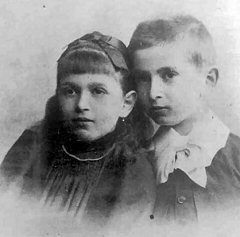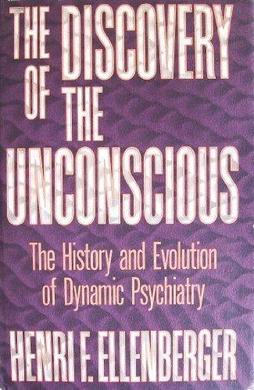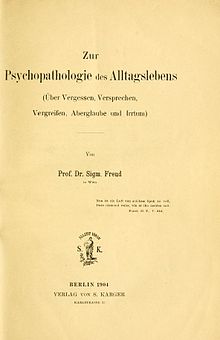
Jacques Marie Émile Lacan was a French psychoanalyst and psychiatrist. Described as "the most controversial psycho-analyst since Freud", Lacan gave yearly seminars in Paris, from 1953 to 1981, and published papers that were later collected in the book Écrits. Transcriptions of his seminars, given between 1954 and 1976, were also published. His work made a significant impact on continental philosophy and cultural theory in areas such as post-structuralism, critical theory, feminist theory and film theory, as well as on the practice of psychoanalysis itself.
Psychoanalysis is a theory developed by Sigmund Freud. It describes the human soul as an apparatus that emerged along the path of evolution and consists mainly of three parts that complement each other in a similar way to the organelles: a set of innate needs, a consciousness that serves to satisfy them, and a memory for the retrievable storage of experiences during made. Further in, it includes insights into the effects of traumatic education and a technique for bringing repressed content back into the realm of consciousness, in particular the diagnostic interpretation of dreams. Overall, psychoanalysis represents a method for the treatment of mental disorders.

Sigmund Freud was an Austrian neurologist and the founder of psychoanalysis, a clinical method for evaluating and treating pathologies seen as originating from conflicts in the psyche, through dialogue between patient and psychoanalyst, and the distinctive theory of mind and human agency derived from it.
Psychoanalytic literary criticism is literary criticism or literary theory that, in method, concept, or form, is influenced by the tradition of psychoanalysis begun by Sigmund Freud.
In psychoanalytic theory the “id, the ego and the superego” are three different, interacting agents in the psychic apparatus as Sigmund Freud summarized and defined it in his structural model of the psyche. He developed these three terms to describe the basic structure and various phenomena of mental life as they were encountered in psychoanalytic practice. Freud himself used the German terms das Es, Ich, and Über-Ich, which literally translate as "the it", "I", and "over-I". The Latin terms id, ego and superego were chosen by his original translators and have remained in use.
In psychoanalysis, a Freudian slip, also called parapraxis, is an error in speech, memory, or physical action that occurs due to the interference of an unconscious subdued wish or internal train of thought. Classical examples involve slips of the tongue, but psychoanalytic theory also embraces misreadings, mishearings, mistypings, temporary forgettings, and the mislaying and losing of objects.
Perversion is a form of human behavior which deviates from what is considered to be orthodox or normal. Although the term perversion can refer to a variety of forms of deviation, it is most often used to describe sexual behaviors that are considered particularly abnormal, repulsive or obsessive. Perversion differs from deviant behavior, in that the latter covers areas of behavior for which perversion would be too strong a term. It is often considered derogatory, and, in psychological literature, the term paraphilia has been used as a replacement, though this term is controversial, and deviation is sometimes used in its place.
Free association is the expression of the content of consciousness without censorship as an aid in gaining access to unconscious processes. The technique is used in psychoanalysis which was originally devised by Sigmund Freud out of the hypnotic method of his mentor and colleague, Josef Breuer.

In psychology, sublimation is a mature type of defense mechanism, in which socially unacceptable impulses or idealizations are transformed into socially acceptable actions or behavior, possibly resulting in a long-term conversion of the initial impulse.

The Interpretation of Dreams is an 1899 book by Sigmund Freud, the founder of psychoanalysis, in which the author introduces his theory of the unconscious with respect to dream interpretation, and discusses what would later become the theory of the Oedipus complex. Freud revised the book at least eight times and, in the third edition, added an extensive section which treated dream symbolism very literally, following the influence of Wilhelm Stekel. Freud said of this work, "Insight such as this falls to one's lot but once in a lifetime."

Three Essays on the Theory of Sexuality, sometimes titled Three Contributions to the Theory of Sex, is a 1905 work by Sigmund Freud, the founder of psychoanalysis, in which the author advances his theory of sexuality, in particular its relation to childhood.
In philology, a lapsus is an involuntary mistake made while writing or speaking.

Studies on Hysteria is an 1895 book by Sigmund Freud, the founder of psychoanalysis, and the physician Josef Breuer. It consists of a joint introductory paper ; followed by five individual studies of hysterics – Breuer's famous case of Anna O., seminal for the development of psychoanalysis, and four more by Freud— including his evaluation of Emmy von N— and finishing with a theoretical essay by Breuer and a more practice-oriented one on therapy by Freud.

Beyond the Pleasure Principle is a 1920 essay by Sigmund Freud. It marks a major turning point in the formulation of his drive theory, where Freud had previously attributed self-preservation in human behavior to the drives of Eros and the regulation of libido, governed by the pleasure principle. Revising this as inconclusive, Freud theorized beyond the pleasure principle, newly considering the death drives which refers to the tendency towards destruction and annihilation, often expressed through behaviors such as aggression, repetition compulsion, and self-destructiveness.

Dora is the pseudonym given by Sigmund Freud to a patient whom he diagnosed with hysteria, and treated for about eleven weeks in 1900. Her most manifest hysterical symptom was aphonia, or loss of voice. The patient's real name was Ida Bauer (1882–1945); her brother Otto Bauer was a leading member of the Austro-Marxist movement.
In psychoanalysis, preconscious is the loci preceding consciousness. Thoughts are preconscious when they are unconscious at a particular moment, but are not repressed. Therefore, preconscious thoughts are available for recall and easily 'capable of becoming conscious'—a phrase attributed by Sigmund Freud to Josef Breuer.

The Discovery of the Unconscious: The History and Evolution of Dynamic Psychiatry is a 1970 book about the history of dynamic psychiatry by the Swiss medical historian Henri F. Ellenberger, in which the author discusses such figures as Franz Anton Mesmer, Sigmund Freud, Pierre Janet, Alfred Adler, and Carl Jung. The book was first published in the United States by Basic Books. The work has become a classic, and has been credited with correcting older estimates of Freud's level of originality and encouraging scholars to question the scientific validity of psychoanalysis.

Metapsychology is that aspect of a psychological theory that discusses the terms that are essential to it, but leaves aside or transcends the phenomena that the theory deals with. Psychology refers to the concrete conditions of the human psyche, metapsychology to psychology itself.

Why Freud Was Wrong: Sin, Science and Psychoanalysis is a book by Richard Webster, in which the author provides a critique of Sigmund Freud and psychoanalysis, and attempts to develop his own theory of human nature. Webster argues that Freud became a kind of Messiah and that psychoanalysis is a pseudoscience and a disguised continuation of the Judaeo-Christian tradition. Webster endorses Gilbert Ryle's arguments against mentalist philosophies in The Concept of Mind (1949), and criticizes many other authors for their treatment of Freud and psychoanalysis.

The Life and Work of Sigmund Freud is a biography of Sigmund Freud, the founder of psychoanalysis, by the psychoanalyst Ernest Jones. The most famous and influential biography of Freud, the work was originally published in three volumes by Hogarth Press; a one-volume edition abridged by literary critics Lionel Trilling and Steven Marcus followed in 1961. When first published, The Life and Work of Sigmund Freud was acclaimed, and sales exceeded expectations. Although the biography has retained its status as a classic, Jones has been criticized for presenting an overly favorable image of Freud. Jones has also been criticized for being biased in his treatment of rival psychoanalysts such as Otto Rank and Sándor Ferenczi.













